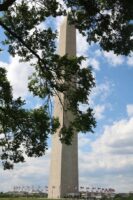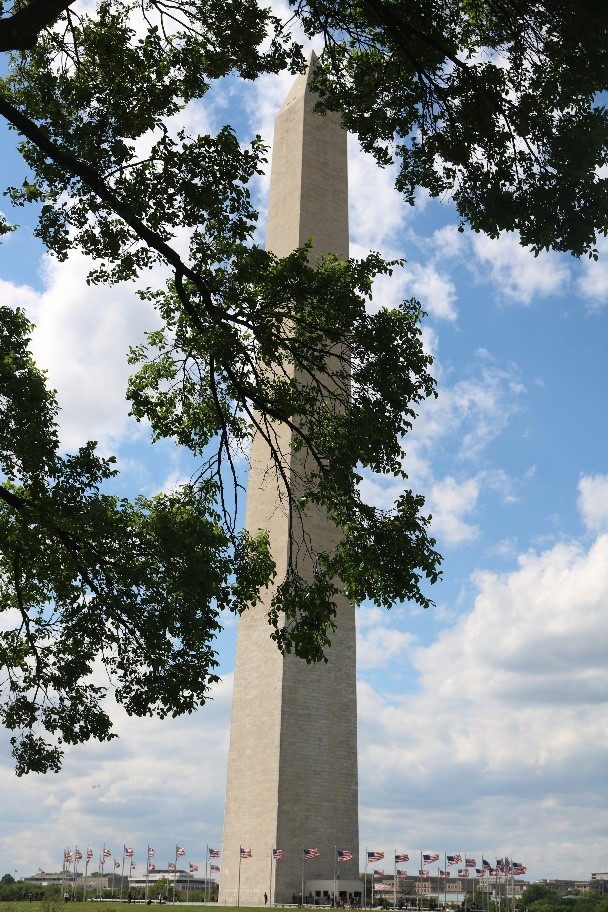EcoPerspectives Blog
A Call to Incorporate Language Access into Washington, D.C.’s Climate Adaptation Plan
By Emily Starobin, Staff Editor for the Vermont Journal of Environmental Law
May 3, 2024

When climate disaster strikes, language services are a matter of life and death and Washington, D.C.’s climate plan misses the mark.
Our nation’s capital is a multilingual city, with 15% of residents speaking a language other than English at home. The city’s rich linguistic diversity makes the expansion of language access that much more important. Under the D.C. Language Access Act, all programs, departments, and services must provide language access to all residents with limited English proficiency (LEP) or no-English proficiency (NEP). However, the climate adaptation plan, Climate Ready D.C., does not include a specific language access policy. To adequately serve all city residents and advance environmental justice more broadly, the District should incorporate a language access plan as part of its climate adaptation strategy.
Scope of the Problem
The climate adaptation plan fails to address language access despite significant LEP/NEP communities. In response to extreme snowstorms, increased flooding, and record-breaking heat waves, the city’s Department of Energy & the Environment (DOEE) adopted Climate Ready D.C. in 2016. Partnering with technical experts, agencies, and community-based organizations, the DOEE identified 77 action items across four main areas. These areas include transportation and utilities, buildings and development, neighborhoods and communities, and governance and implementation. Unfortunately, only one action item focused on language access: providing American Sign Language (ASL) interpreters at cooling centers (air-conditioned or cooled buildings to provide respite and safety during extreme heat).
Language access is an essential component of any disaster recovery and resiliency plan, especially for a diverse city like D.C. The foreign-born population accounts for more than one-third of city’s population growth. Top languages spoken other than English are Spanish, French, Amharic/Ethiopian, German, and Chinese. Of all the residents, 15% speak a language other than English at home, and of these residents, 32% are LEP/NEP. Over half of LEP/NEP individuals speak Spanish. About two-thirds of LEP/NEP households are linguistically isolated, meaning that no one 14 and older in the household is proficient in English.
Climate change resiliency through language access is important to the broader concept of environmental justice. EPA defines environmental justice as “the fair treatment & meaningful involvement of all people regardless of race, color, national origin, or income, with respect to the development, implementation, and enforcement of environmental laws, regulations, and policies.” In D.C., according to the U.S. Climate Vulnerability Index, a significant portion of NEP/LEP communities (who “speak[] English less than well”) also suffer from high overall climate change vulnerability due to factors such as low income, poor health outcomes, and inadequate critical infrastructure.
Proposed Solution
DOEE should integrate a language access plan into its climate adaptation strategy, Climate Ready D.C. In doing so, the DOEE must collaborate with D.C. Office of Human Rights and D.C. Language Access Coalition. A comprehensive disaster-specific language access plan will help guarantee that all NEP/LEP residents have meaningful access to disaster preparedness and adaptation services, in line with the Language Access Act.
Existing language access laws and programs allow this proposal to be feasible. First, the D.C. Language Access Act requires expanded access and participation in all public services, activities, and programs for LEP/NEP residents. This Act applies to all city government agencies, departments, programs, contractors, and grantees, including the DOEE.
Second, the Act established the Language Access Program, based out of D.C.’s Office of Human Rights. The Program works with city agencies to ensure that all LEP/NEP residents have access to free translation, interpretation, and signage when seeking government services. The Act also designated the D.C. Language Access Coalition as the official third-party consultant to implement the Act, collect data, and conduct outreach. The Coalition is an alliance of 41 community-based and civil rights organizations focused on language access rights and other social justice issues affecting local immigrant communities. The Program and Coalition will prove indispensable in implementing the proposed language access plan specific to climate adaptation.
Drawbacks
Creating a climate disaster language access plan will require time, financial resources, and stakeholder support. First, the community-based organizations that make up the D.C. Language Access Coalition are already strapped for resources. The Coalition will need additional funding to implement the plan. Second, the plan will take time and resources away from city agencies, which are currently at capacity. Both the DOEE and the D.C. Office of Human Rights will need to devote resources to complete this project. Third, the Coalition and the city government will need stakeholder support to meaningfully engage the community in identifying and addressing the climate adaptation and preparedness needs of LEP/NEP residents.
Policy in Practice
The Urban Institute offers helpful recommendations in its study, Ten Years of Language Access in Washington, D.C. For example, the Institute suggests that D.C. expand data collection and analysis, invest in multilingual personnel, improve quality and accessibility of language services and materials, and develop targeted community engagement.
These recommendations apply to two of the four action areas in Climate Ready D.C. First, within the transportation and utilities area, the plan aims to increase the resiliency of communication systems before, during, and after a disaster. The city can mirror Frontline Resource Institute’s Communication Plan for Building Community Resilience to build a strong communication network by using the appropriate language and the specific communication platforms most used by impacted residents. FEMA’s Language Access Policy would also help employ various types of language assistance, including oral language and written translation.
Second, for the neighborhoods and communities action area, Climate Ready D.C. should incorporate emergency preparedness and planning for climate-related events with a focus on the most vulnerable communities. To do so, the proposed plan must prioritize language access services for individuals most at risk of climate change disasters. Using mapping tools (such as the U.S. Climate Vulnerability Index) and improving data collection are necessary steps to identify priority communities and their specific language needs.
Lastly, the plan must incorporate ASL services in addition to spoken language services. The city is home to a thriving deaf community, with over 20,000 deaf and hard-of-hearing residents. While the D.C. Language Access Act does not require the right to ASL services, Climate Ready D.C. has a responsibility to reflect the needs of deaf and hard-of-hearing residents. Vermont Agency of Natural Resource’s draft Language Access Plan serves as a model for incorporating non-spoken languages into climate plans.
Conclusion
Our nation’s capital is a multilingual city that needs a multilingual solution to climate change adaptation. For this reason, the DOEE must incorporate a specific language access plan for spoken and non-spoken languages within the Climate Ready D.C. Looking to other language access plans and building on the city’s existing language access infrastructure, the D.C. Language Access Coalition will play a vital role in implementing the proposed plan. D.C. has a duty to ensure all individuals of varying English proficiency and communication needs have meaningful access to climate adaptation and preparedness resources. Their lives—and ours—depend on it.

